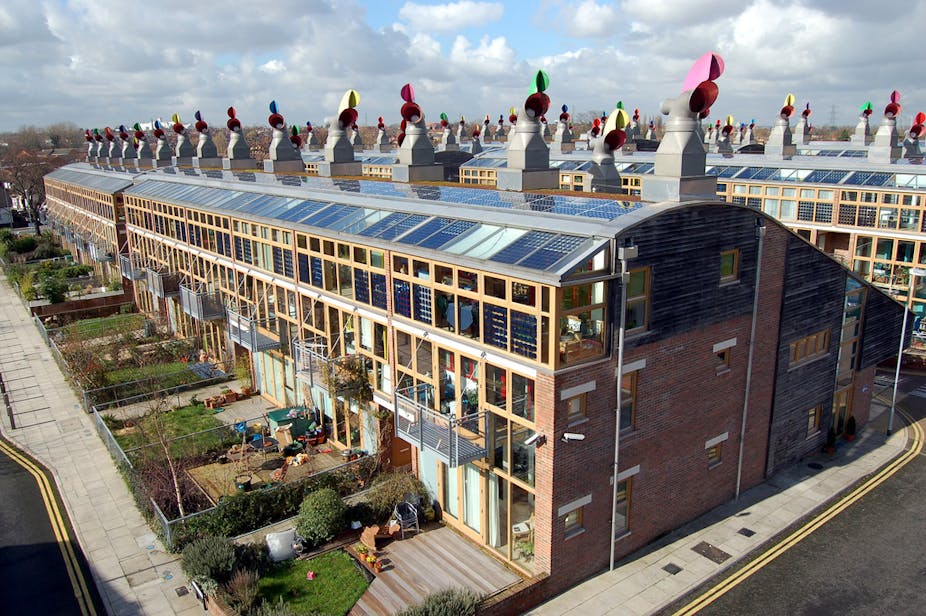Mandatory energy efficiency ratings for houses have been in force in parts of the United Kingdom and elsewhere in Europe for some time and appear to have gained general acceptance. New homes in particular are subject rigorous building design and construction standards to ensure home energy consumption is minimised as much as possible.
In Australia, considerable effort and increasing levels of design rigour are being applied to new homes and extensions in order to meet energy efficiency standards. But until now, nothing has been done in regard to established homes, which represent the most significant proportion of housing stock. A recent COAG pact saw a national agreement to introduce energy efficiency rating measures to existing homes.
It is anticipated that this requirement will be mandated as part of the selling and leasing documentation. In other words, along with important legal documents such as vendor statements, leases and contracts, a separate declaration will be required providing the buyer or tenant with details about the energy efficiency of the home.
While well intended, this arrangement is problematic and careful consideration must be given to the detail.
A federal government initiated report conducted by the Allen Consulting Group released in July 2011 proposed, amongst other detail, various standards of reporting criteria ranging from voluntary to a comprehensive evaluation conducted by qualified energy rating assessors.
All governments are hoping that this form of reporting will draw the importance of energy consumption and resulting carbon emissions to the attention of home seekers. The unspoken aim appears to be to encourage owners seeking to sell or lease low-energy efficient homes to undertake measures to improve the efficiency so that it will be viewed more favourably by the market and not suffer any price penalty.
My question is this: how will buyers synthesise the energy efficiency of homes with other important buying decision criteria, such as location, neighbourhood amenities, proximity to transport? These have long been traditional buying motives. Tenants, on the other hand, are more transient in their occupation behaviours and are therefore more likely to consider energy efficiency and demand more of landlords.
Local and international research suggests that measures necessary to improve energy efficiency can be expensive. It can take many years for the energy expense saved to offset the cost of initial outlay. So, are sellers likely to purchase such efficiency measures prior to sale? And, are buyers able to outlay such money having just purchased and are probably at their financial limit? Again, research suggests that payback periods are too great to be practical and many argue for government support via subsidies, which in Australia, are being wound back.
How can we achieve what is a noble objective? Ultimately, we need to change our habits. We live in a relatively temperate climate (particularly in the southern states) and give little or no consideration to how to orientate our homes when building or the amount of appliances that continually invade our homes – such as computers, plasma TVs and smart phones, which require more regular charging than other mobile phones.
It is how we live that determines the amount of energy consumed. This is not to argue against energy efficiency ratings, but to recognise alone they are likely to have a minimal, if any, impact in creating more energy efficient homes in our built stock.
So what is likely to drive change? Increased energy costs is one way forward, with the government taking the initiative and sensibly introducing and enhancing subsidy schemes that encourage retrofitting existing homes with well advised improvements. For example, a home with northerly aspect in the southern states ought to ensure that external garden design does not limit winter sun from accessing the home, and if possible, provide greater shade in the summer.
A home facing west should consider ways of minimising exposed windows or implementing the use of double-glazing to impede summer heat gain and naturally higher heat retention in winter. These are readily achievable for established homes, although some financial government assistance would help.
An objective review of current research would conclude that behaviour is the ultimate determinant of reduced energy consumption, in much the same way as increasing petrol costs saw the demise of the V8 vehicle from our roads. Increasing energy costs will cause people to rethink whether to leave the heater on when they go to work just so they walk into a nice warm home when they return.
From a property perspective, the question becomes: how much do energy costs have to increase before home buyers (and eventually tenants) start to seriously factor the energy efficiency of a home into their decision criteria? When we see this happening then we will see people starting think how about to make their homes more energy efficient to attract to buyers.
Mandatory energy efficiency ratings are an excellent means of delivering the environmental message into the home, but in themselves they are likely to achieve little unless other coexisting policies and measures are implemented to ensure behaviour is changed. This is crucial to ensure we reduce the levels of carbon emissions caused by houses – which according to the Department of Climate Change and Environment makes up about 10% of total carbon output in Australia.

